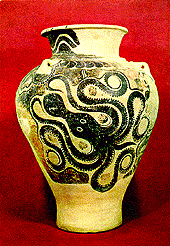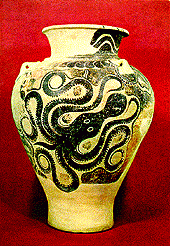


Oceanographic Data off the Monterey Deep-Sea Fan, with T. E. Chase and W. R. Normark, University of California, Institute of Marine Resources Technical Report TR-58, [1975].
pdf format Side 1, Side 2
Oceanographic Data off Central California - including the Delgada Deep-Sea Fan, with W. R. Normark and T. E. Chase, Lawrence Berkeley Laboratory Publication LBL-Pub 92, (1976).
pdf format Side 1, Side 2
Oceanographic Data off Northern California and Southern Oregon, with T. E. Chase, M. L. Holmes, W. R. Normark, J. A. Thomas, D. S. McCulloch, and L. D. Kulm, Lawrence Berkeley Laboratory Publication, LBL-Pub 251, (1978).
pdf format Side 1, Side 2
Oceanographic Data off Oregon including the Astoria Deep-Sea Fan, with T. E. Chase, M. L. Holmes, W. R. Normark, J. A. Thomas, D. S. McCulloch, P. R. Carlson, L. D. Kulm, and J. D. Young, Lawrence Berkeley Laboratory Publication, LBL-Pub 253, (1979).
pdf format Side 1, Side 2
Oceanographic Data off Washington, including the Nitinat Deep-Sea Fan, with T. E. Chase, M. L. Holmes, W. R. Normark, and J. A. Thomas, Lawrence Berkeley Laboratory Publication, LBL-Pub 223, (1977).
pdf format Side 1, Side 2
Oceanographic Data off Southern Hawaiian Islands, with T. E. Chase, W. R. Normark, J. A. Thomas, and J. D. Young, Lawrence Berkeley Laboratory Publication, LBL-Pub 359, (1980).
pdf format Side 1, Side 2
Oceanographic Data off Puerto Rico and the Virgin Islands, with T. E. Chase, W. R. Normark, C. P. Miller, B. A. Seekins, and J. D. Young, Lawrence Berkeley Laboratory Publication, LBL-Pub 360, (1981).
pdf format Side 1, Side 2
Marine Topography of Offshore Tutuila Island, Samoa Islands, with T. E. Chase, W. R. Normark, C. E. Gutmacker, B. A. Seekins, K. E. Lund and S. C. Vatil: Geological Society of America, Map and Chart Series, MCH068; (1988).pdf format Side 1, Side 2
A bit of History These charts and accompying data sets originated with my thesis work on the Monterey and Delgada fans. I actually was a grad student at Harvard, but through the 'old boy' network got a summer job with Bill Menard at Scripps starting in 1960. He wanted me to work up the cores taken on FanFare Expedition, which at that time were sitting in cold storage unopened. Eventually in agreement with my advisors at Harvard they agreed that work would make a thesis topic. Bill Menard had the vision that this could become the prototype of a quandrangle sheet for the oceans. The question now was what kind of base map (bathymetric instead of topographic) should be used. There was the Pioneer Survey done by the then Coast and Geodetic Survey in fathoms. I suggested that it be converted to meters using Matthews Tables, which would be closer to the actual depths and correspond with international conventions. The Pioneer Survey maps were in uncorrected fathoms being the depths recorded by the fathometer without a speed of sound correction due to the changing temperature and water properties with depth. One real problem appeared. The Navy (this is in the height of the Cold War) classified the Pioneer map. Pretty hard to have a classified thesis at Harvard. Also, poor Dale Krause working off Guadalupe Island had his base map razor bladed out of his thesis on file, fortunately after his defense at Scripps. The Navy classified all bathymetry taken with a 5 mile line spacing. They were rightfully concerned that in particular detailed maps of seamounts would give the Russians potential places to hide missile submarines near our coasts, which could launch with very little response time. In the Atlantic, the solution was to displace the location of seamounts; in the Pacific, block out the position of seamounts from the base with zipatone so that the actual heights were masked. Fortunately there was a solution produced by the Russians themselves. They actually published bathymetric profiles and tracks of their oceanographic ships. Using their data (which met the greater than five mile line spacing) I was able to produce a map in corrected meters using the Pioneer Survey as an underlay over the Russian data. This was not a easy job converting using Matthews tables. In the midst of my thesis work, the Pioneer Survey map was published in a volume of the oceans, but with 'zipped' sea mounts. Also, the Navy declassified their plotting sheets (in general, they were way out of date, not even including Shepard's 1938 published maps!!). In a hilarious move, they went from 'secret' to 'classified' to '25 cents' now available at that price at any nautical chart store. Thus my metric thesis map was now kosher if I covered the sea mounts.My thesis was published as a Hydralic Engineering Lab report (HEL-13) of the University of California where I went after leaving Harvard. However, the map was so reduced to fit into the format to be not very useful. The base map was updated after Shepard's Montcanyon II expedition of 1967, where a major meander of the Monterey channel system was discovered. The map still was not generally available and only single copies of my original and modified base map at plotting scale were produced. On Montcanyon II I met Bill Normark (then a graduate student) who was working on Deep-Tow surveys of fans off Southern California. Prior to that I had been working with Tom Chase at Scripps who through Bill Menard produced a series of free bathymetric charts for the fishing areas to the south for the Bureau of Commercial Fisheries. The fishermen loved these maps, although not really understanding marine geology. The contoured bathymetry of sea mounts looked like bull's eyes to them. Since fish concentrate over sea mounts, these maps at plotting scale were a great boon to them. In the past, the fisherman located good fishing by birds and prior experience and came back to them using lore (i.e. "sail three days at 200 degrees, then sail 270 until you see the birds"]. Thus Tom, Bill and I tried to figure out how to get other maps available, not just for fishermen but for scientists. The basic concept was to have available in a convenient format, all the current information for that area to aid in at sea data collection and to simplfy updating. Tom published his famous world chart through the Institute of Marine Resources. At that time I had a half-position with IMR so we got permission to publish at least part of my base map at plotting scale through them. Remembering Bill Menard's idea of an oceanographic 'topographic sheet' with additional text, we saw that at plotting scale and with standard print sheet size there was plenty of scale to put additional information. Two sided printing gave us more space. Thus the concept of the Oceanographic Data Sheets were born. We included all published references to date, profiles, and 'mini maps' of magnetics, weather, and just about anything we could find for the particular region. The first sheet Monterey was published via IMR.
After the first sheet, big changes in the location of the players. Tom and Bill moved to the USGS in Menlo Park. I got bounced from my position in Civil Engineering and at IMR and moved up the hill to the UC Lawrence Berkeley Lab and set up the Marine Sciences Group. We started publishing the Oceanographic Data Sheets with an LBL designation. I should mention we bootlegged the whole operation and except for the initial sheets, I paid for the printing. That way we could give them out for free and initially did press runs of 1000 copies (Surely more than all the marine geologists at that time). We finished the West Coast of the US series, except for Southern California south of Conception. Tom had a mock-up of the bathymetry, but we could never resolve the readable font size for the far too numerous references to print without losing the mini-maps. Also at that time, I became involved with the Department of Energy's Ocean Thermal Energy Program. We then produced data sheets for potential sites in the Hawaii, Puerto Rico-Virgin Islands and American Samoa areas. The Hawaii and Puerto Rico-Virgin Islands sheets were produced via LBL. In another move, the Marine Sciences Group left LBL and moved back to the Berkeley Campus in the Paleo Museum! (UC politics makes the Byzantine Empire look as bland as Switzerland!). Initially we were going to publish the next sheet Samoa via the Paleo Museum and the UC Press. The morons at the Press turned down the department decision saying they don't publish vanity press material!!!! Undaunted we approached the 'vanity' press of the Geological Society of American and they happily published the chart in their map series and in color. Sadly that was the last chart we produced. We were never able to generate any interests by other parties to continue the concept. We envisioned coverage over all the US coasts.
ACKNOWLEDGEMENTS
The bathymetry for Monterey and Delagda sheets was compiled and contoured by me. Tom Chase put together the bathymetry for the rest. The mini-maps and references were done by Bill Normark and me with assistance by area from researchers named in the titles. Tom Chase and his staff did the final drafting. Printing was done at various local print shops, including the Rosacrutian Press in San Jose (What strange powers do these map possess??).I had pondered how to get these maps on-line to compliment my research papers at my web-site, but until recently the costs of scanning were a bit too high. At Bill Nornmark's Memorial in early 2008, I mentioned the problem to Dave Scholl, who said he thought costs were now quite reasonable. And I found out they were!! Thanks to Mark Homes, Mary Hunt, I got unfolded copies to scan to compliment my own set (mostly folded). Herb Ranharter was kind enought to use his press to 'iron' out the folds in the unrolled copies.
A PROPOSAL
Hopefully publication of these maps on-line and available for printing as pdf files might jog some renewed interest. Tom and Bill are no longer with us, but I am still kicking and would certainly assist in any effort to restart and improve the project and concept. On-line may be the way to go as references and the mini-maps can be updated periodically and avoid the limitations of the paper size and the two sided format. The bathymetry is available world wide via the GEBCO Atlas. Some one or some group or agency could take up the responsibility for keeping the charts current or adopting a chart or area?? A kind of oceanographic Wikitopia??